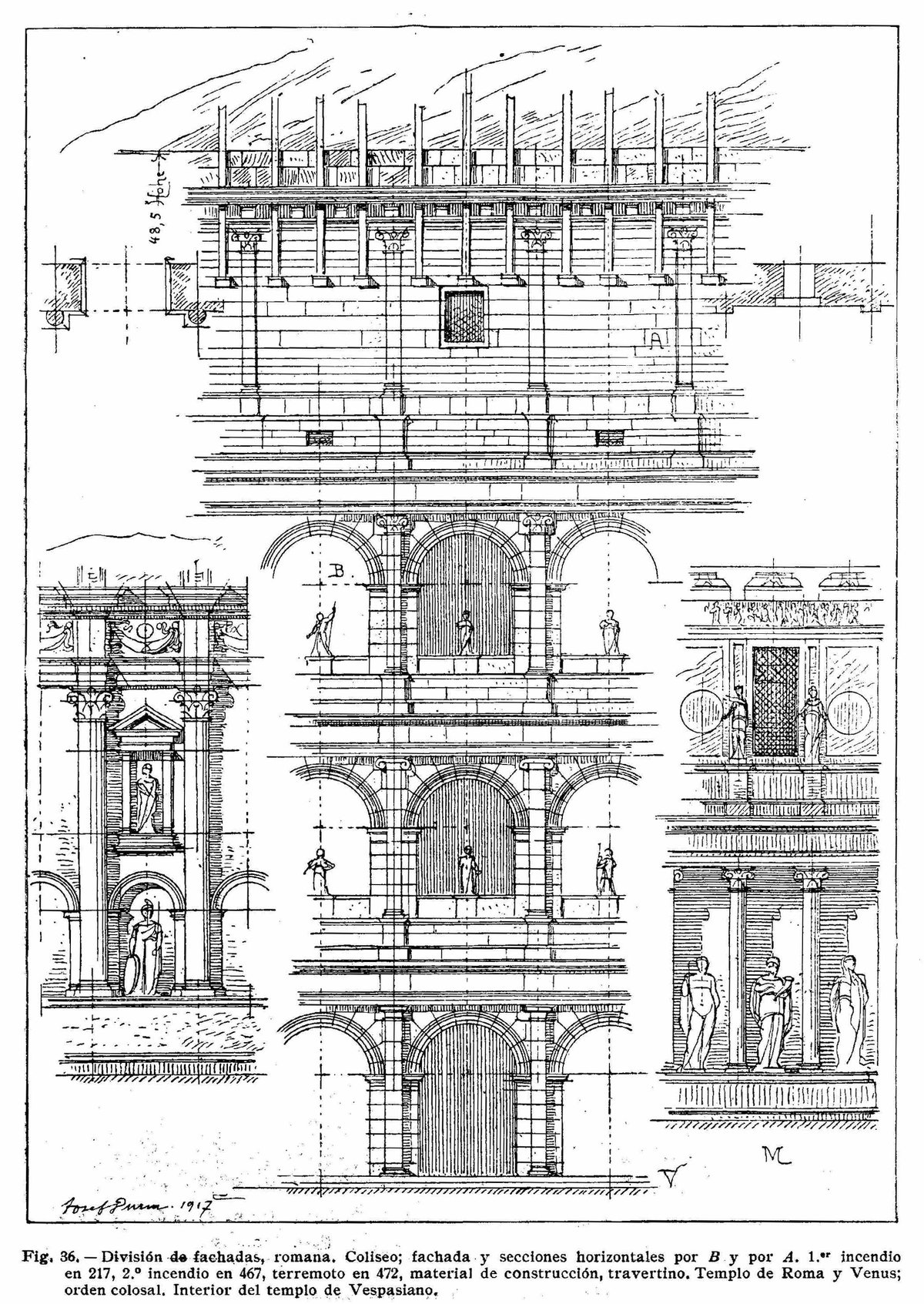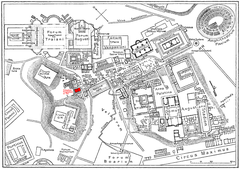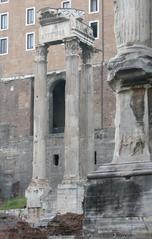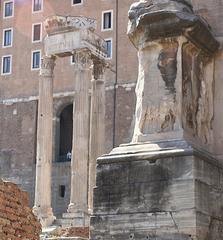
Temple of Vespasian and Titus, Rome: Visiting Hours, Tickets & Historical Sites Guide
Date: 14/06/2025
Introduction: History and Cultural Significance
Located at the western end of the Roman Forum, the Temple of Vespasian and Titus is a powerful testament to the Flavian dynasty’s enduring legacy. Built to honor Emperor Vespasian and his son Titus, this temple commemorates two rulers who restored order to Rome following the turmoil of the Year of the Four Emperors. More than a religious structure, it stands as an architectural and political statement, celebrating their deification and reinforcing the authority of the imperial cult.
Constructed soon after Vespasian’s death in 79 CE and completed under Domitian by 87 CE, the temple’s placement among other monumental structures such as the Temple of Concord and Temple of Saturn highlights its significance at the heart of Rome’s civic and spiritual life. Its imposing Corinthian columns and intricate architectural details reflect the sophisticated blend of Italic and Hellenistic styles that characterized Flavian-era construction.
Accessible through the Roman Forum’s main entrances and included in a combined ticket with the Colosseum and Palatine Hill, the temple is open daily (excluding select holidays), and offers partial accessibility for visitors with mobility needs. Guided tours and audio guides are available, enriching the visitor experience with historical insights and cultural context. The temple’s remains, particularly its three towering marble columns, offer a tangible connection to ancient Rome’s grandeur and are among the Forum’s most iconic ruins. (Ancient Rome Live, Sacred Destinations, Parco Colosseo Official Site)
Table of Contents
- Discover the Temple of Vespasian and Titus
- Historical Background
- Visiting the Temple
- Preservation and Legacy
- Visitor Experience & Practical Tips
- Cultural Insights & Etiquette
- Essential Information
- FAQs
- Summary & Final Tips
- References
Discover the Temple of Vespasian and Titus
As a must-visit site for anyone exploring Rome’s archaeological treasures, the Temple of Vespasian and Titus offers a unique glimpse into the power, artistry, and politics of Imperial Rome. Its ruins are a focal point for visitors interested in the intersection of history, architecture, and the evolution of Roman identity.
Historical Background
Origins and Construction
The temple was commissioned by Titus shortly after Vespasian’s death in 79 CE and completed by their successor, Domitian, around 87 CE. Its strategic location underscores the Flavian dynasty’s intent to tie their legacy to Rome’s most revered civic and religious spaces. The temple formed part of a broader Flavian construction initiative that included the Colosseum and Temple of Peace, designed to restore Rome’s splendor after civil conflict.
Architectural Features
- Podium and Foundations: The temple stands on a robust concrete podium faced with travertine, measuring about 33 by 22 meters, and accessed by a broad staircase.
- Columns and Entablature: Eight Corinthian columns (octastyle) adorned the front, with thirteen on each side, creating a grand peripteral design. Three original marble columns, each approximately 14.2 meters tall, remain today.
- Inscription and Frieze: The entablature bears an inscription commemorating restoration by Septimius Severus and Caracalla in the 3rd century CE. Decorative friezes feature motifs like bucrania (bull skulls) and sacrificial implements, signifying the temple’s religious function.
- Cella and Interior: The cella housed statues of the deified emperors and was richly decorated with marble and stucco.
- Roof and Pediment: The temple likely had a terracotta-tiled roof and a sculpted pediment, although these features have not survived.
Historical Significance
The temple not only served as a site of worship but also as a vehicle for imperial propaganda. By celebrating the deification of Vespasian and Titus, the Flavians reinforced their claim to divine favor and stability, shaping public perception of their dynasty’s legitimacy. The temple’s presence among other sanctuaries of deified emperors in the Forum further established the Flavians within Rome’s sacred landscape.
Visiting the Temple
Location & Access
Situated within the Roman Forum, the temple is accessible from entrances on Via della Salara Vecchia and Via di San Gregorio. The Forum is well-connected by public transport, including Metro Line B (Colosseo station) and several bus routes. (Wikipedia, AbsolutViajes)
Opening Hours
- Standard Hours: Generally open daily from 8:30 AM until one hour before sunset (seasonal variations apply).
- Holidays: Closed on January 1, May 1, and December 25. Confirm hours via the official site prior to your visit.
Tickets & Admission
- Ticket Inclusions: Admission to the Roman Forum, Temple of Vespasian and Titus, Colosseum, and Palatine Hill.
- Pricing: Approx. €16 for adults, reduced rates for EU citizens aged 18–25, and free for children under 18.
- Purchase: Tickets can be bought online or onsite. Advance purchase is recommended to avoid queues. (Parco Colosseo Official Site)
Accessibility Information
- The Forum’s terrain is uneven, with ancient paving and steps. Some pathways are wheelchair-friendly, but assistance is advised for those with mobility challenges. (Parco Colosseo accessibility info)
Guided Tours & Audio Guides
- Expert-led tours and audio guides are available at the entrance or through mobile apps, providing historical context and in-depth commentary.
Nearby Attractions & Amenities
- Adjacent Sites: Temple of Saturn, Temple of Concord, Arch of Septimius Severus, Colosseum, and Capitoline Hill.
- Facilities: Restrooms, water fountains, and cafes are available near the Forum’s entrances.
Preservation and Legacy
Despite centuries of damage, three original Corinthian columns and portions of the entablature remain, testifying to the temple’s former grandeur. Restoration work in the 3rd century CE by Septimius Severus and Caracalla, as well as 19th-century interventions by Giuseppe Valadier, have helped conserve the site for modern visitors. Today, ongoing preservation ensures the temple’s survival as a key feature of the Roman Forum. (Sacred Destinations, AncientPedia)
Visitor Experience & Practical Tips
- Wear comfortable shoes: Terrain is uneven and includes steps.
- Bring sun protection and water: The Forum has limited shade, especially during summer.
- Best times to visit: Early morning or late afternoon offers pleasant lighting and fewer crowds.
- Photography: Permitted throughout the Forum; the temple’s columns are a favorite subject.
- Guided tours: Enhance your understanding of the temple’s history and significance.
Cultural Insights & Etiquette
- Respect the ruins: Do not climb on structures or remove materials.
- Engage with the site: Read informational panels and consider visiting the Roman Forum Museum for further context.
- Reflect on history: The temple’s architecture and inscriptions offer a direct link to the political and religious life of ancient Rome.
Essential Information
- Location: Roman Forum, Via della Salara Vecchia, Rome, Italy
- Opening Hours: Generally 8:30 AM–sunset (check official site for updates)
- Admission: Included with Forum/Colosseum/Palatine ticket
- Accessibility: Partial; check accessibility info
- Facilities: Restrooms and water fountains on site
Frequently Asked Questions (FAQ)
Q: What are the visiting hours?
A: The Roman Forum (including the temple) is open from 8:30 AM until one hour before sunset; hours vary by season.
Q: Are tickets required?
A: Yes, entry is included with the Roman Forum ticket, which also covers the Colosseum and Palatine Hill.
Q: Is the temple accessible for wheelchair users?
A: Accessibility is partial; some paths are wheelchair-friendly, but uneven terrain may pose challenges.
Q: Are guided tours available?
A: Yes, guided tours and audio guides are widely available.
Q: Can I take photographs at the temple?
A: Photography is allowed and encouraged.
Summary & Final Tips
The Temple of Vespasian and Titus is a striking symbol of the Flavian dynasty’s architectural innovation, religious devotion, and political acumen. Its remaining Corinthian columns and historic entablature offer an evocative window into the power and legacy of ancient Rome. When planning your visit, purchase tickets in advance, wear comfortable shoes, and consider a guided tour for a richer experience. Early morning or late afternoon visits provide the best photographic opportunities and a more tranquil atmosphere.
For further exploration, nearby sites such as the Arch of Titus and Temple of Saturn deepen your understanding of Rome’s imperial history. Download the Audiala app for audio guides, maps, and updates, and follow us on social media for more travel tips.




















































































































































































































































